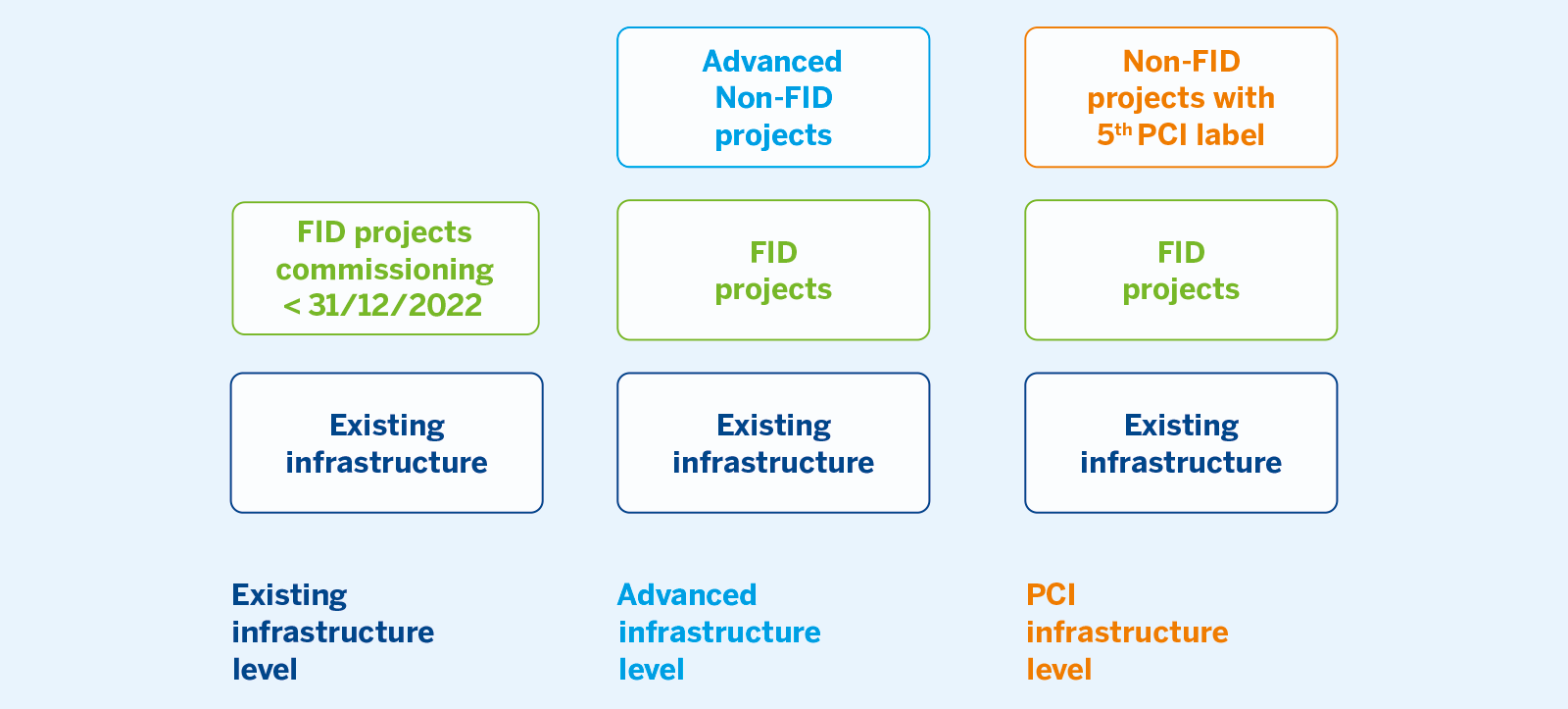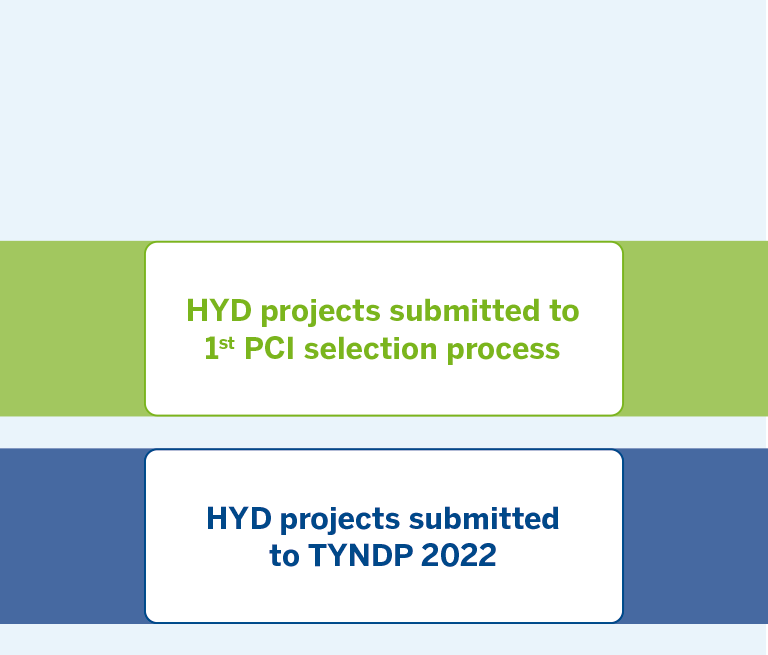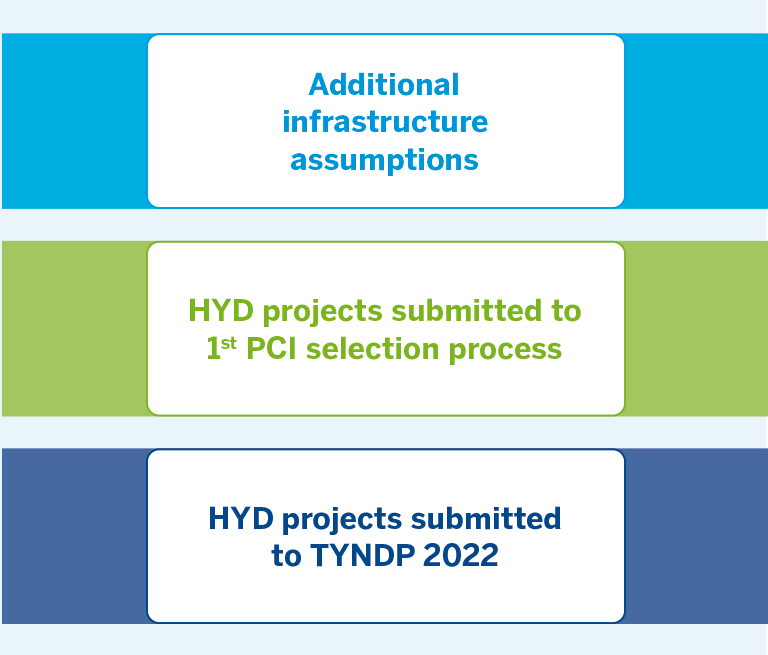Picture courtesy of Plinacro
4 Security of supply needs
Security of supply needs are assessed by measuring the ability of the European gas systems to ensure the continuity of methane and hydrogen supply to all countries under various stress conditions.
This section assesses the resilience of the European gas system to cope with various stressful events:
- Climatic stress
- Supply source disruptions
- Infrastructure disruptions
The resilience of the methane and hydrogen system is measuring by which degree the respective demand can be satisfied under the mentioned stress cases.
It is expressed as the share of the demand that is curtailed (curtailment rate) or as the absolute value of unsatisfied demand (demand curtailment). It can be applied to methane as well as hydrogen. This indicator is calculated at country or balancing zone level over the full time horizon of the TYNDP assessment. Thereby, cooperation is assumed, i. e. the available infrastructure will be used to equalise to the extent possible the curtailment rates of the different countries or balancing zones.
4.1 Demand elasticity
It was observed in the past that high demand events, especially if combined with a tight supply or infrastructure situation, result in prices increases that cause demand reductions. However, such demand elasticity is subject to various assumptions that differ from one country to the other.
When assessing the impact of climatic stress on gas infrastructure (i. e., methane or hydrogen), the demand is considered static and is not responding to the possibility of the supply deficit or price signals. This assumption is necessary to perform a consistent assessment across the different years and the different scenarios of the TYNDP. To be consistent and transparent, the level of exposure to curtailment is always presented in percentages of the demand assuming no demand reaction to the different stressful events. It can also be interpreted as the required demand reduction to prevent demand curtailment.
An extra assumption was made for the H2 Infrastructure Level 2, on top of the input cap used for hydrogen production in Level 1, additional last-resort hydrogen production from methane was introduced to mitigate hydrogen demand curtailments by using surplus methane supply potentials. This can be interpreted as a flexible hydrogen supply potential on top of the scenario values. It could alternatively be read as a proxy for a fuel-switch from hydrogen to methane during the periods of hydrogen demand curtailment (with an inaccuracy due to the conversion loss of hydrogen production using methane), creating an infrastructure-induced scenario sensitivity for information.
It can be assumed that the part of the demand that is not satisfied on a yearly (or even seasonal) basis would not materialise at all.
4.2 Infrastructure levels1
As in previous TYNDP editions, the project status2 is the basis for the definition of methane infrastructure levels:
- Existing Methane Infrastructure level
The Existing Methane Infrastructure level is composed of the existing network + FID projects having their commissioning date no later than 31 December 2022.
The Existing Methane Infrastructure level will be the basis for the following infrastructure levels (PCI and Advanced), as it represents the minimum level of methane infrastructure development that will be considered in the TYNDP 2022 System Assessment.
- Advanced Infrastructure level
The Advanced Infrastructure level is composed of the Existing Methane Infrastructure level + FID projects + advanced projects.
The Advanced Infrastructure level broadens the range of the TYNDP 2022 System Assessment by including the advanced methane projects on top of the existing and FID infrastructure to complement the infrastructure gaps identification.
- PCI Infrastructure level
The PCI Infrastructure level is composed of the Existing Methane Infrastructure level + FID projects + methane infrastructure projects included in the 5th PCI list.
The PCI Infrastructure level is composed by existing infrastructures, infrastructure projects having FID status (whatever their PCI status is) and infrastructure projects labelled as PCIs in the 5th PCI selection process (not having their FID taken yet). Although it includes projects of different maturity, this infrastructure level allows to build a bridge between past PCI selection processes, and it also enables the assessment of the 5th list of methane PCI projects.
1 Detailed information about the project collection is provided in the Infrastructure Report
2 TYNDP time stamp (1 January 2023 for existing infrastructure and PCI project collection for projects)
Figure 4.1: Methane infrastructure levels in TYNDP 2022
Unlike methane, hydrogen infrastructure levels can only be defined with the consideration of planned projects, as there is no existing infrastructure in place. The TYNDP 2022 works with two contrasted hydrogen infrastructure levels:
- Hydrogen infrastructure Level 1:
Hydrogen Infrastructure Level 1 is a project-based infrastructure level, composed of all hydrogen projects submitted by project promoters to the TYNDP 2022 (including infrastructure that was submitted as hydrogen-ready3) as well as hydrogen projects submitted by project promoters to the first PCI selection process under the revised TEN-E Regulation.
- Hydrogen infrastructure Level 2:
Hydrogen Infrastructure Level 2 is defined as a policy-based infrastructure, composed of Hydrogen Infrastructure Level 1 and additional infrastructure assumptions needed to enable policy objectives, such as the 2030 hydrogen imports targets defined by the REPowerEU Plan.
3 Hydrogen projects that apply for the PCI status will undergo a thorough eligibility check by the European Commission. Since this eligibility check was not completed during the preparation of this document, no project that fulfilled the formal submission criteria to the TYNDP was rejected by ENTSOG to be considered for this System Assessment.
Figure 4.2: Hydrogen Infrastructure levels in TYNDP 2022
Infrastructure levels are the basis for the identification of infrastructure gaps in the TYNDP 2022 System Assessment. An innovation of the TYNDP 2022 is the dual assessment of methane and hydrogen infrastructure.
This is achieved by combining each natural gas infrastructure level with both hydrogen infrastructure levels in the TYNDP System Assessment and coupling them by hydrogen production using methane.

Figure 4.3: Natural gas and Hydrogen infrastructure levels in the System Assessment
For more details on the different Infrastructure levels and the related projects, please consult the TYNDP 2022 Infrastructure Report. Extra details and explanations can be also found in Annex D.




